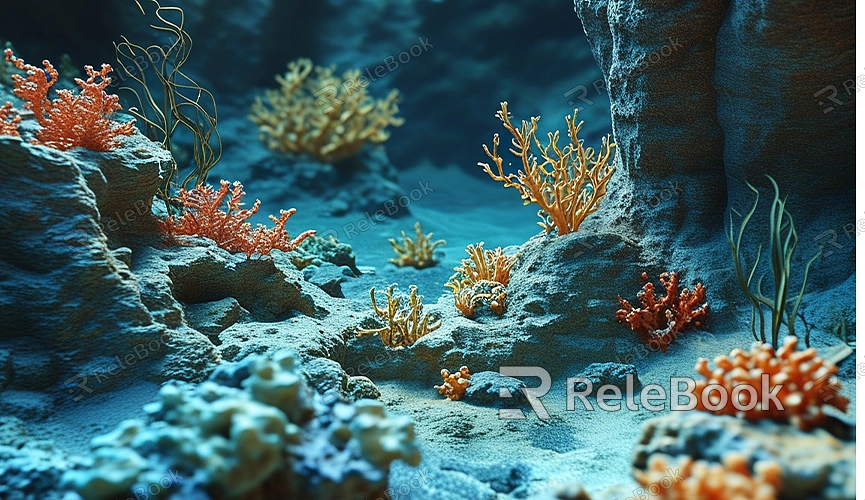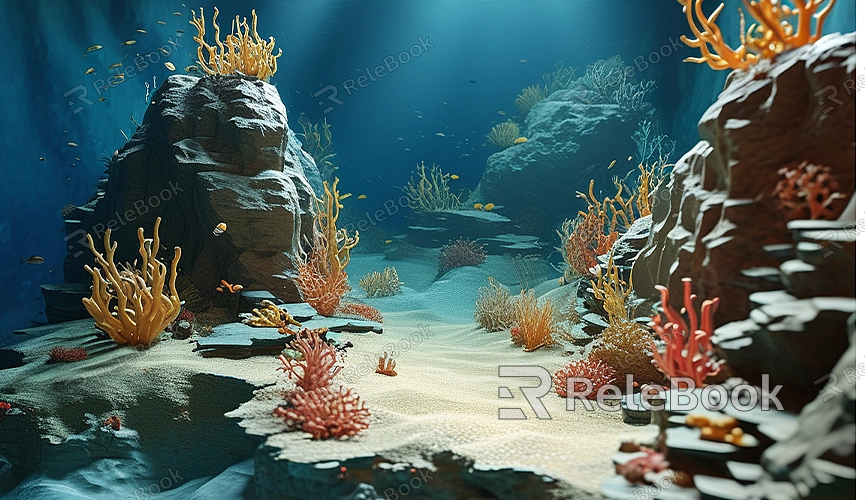How to Make a 3D Model of Water Cycle
The water cycle is one of Earth's most crucial natural processes and is a key topic in Earth science and environmental education. Creating a 3D model of the water cycle can visually demonstrate each stage of the process and help you better understand how water moves around the planet. Whether you're a student, educator, or 3D modeling enthusiast, making a 3D model of the water cycle can provide a deeper learning and creative experience. This guide will show you how to use 3D modeling tools to create a 3D model of the water cycle.
Choose the Right Software
Before starting your 3D model of the water cycle, you need to select the right software tool. There are many 3D modeling programs available, such as Blender, SketchUp, and Maya. If you're a beginner, SketchUp might be a good starting point due to its relatively simple and intuitive interface. For those with some 3D modeling experience, Blender offers more features and flexibility, making it suitable for creating complex natural scenes.

Understand the Basic Components of the Water Cycle
Before creating the model, it's essential to understand the basic components of the water cycle. The main stages of the water cycle include evaporation, condensation, precipitation, and runoff. Each stage has unique characteristics and forms that will be reflected in your 3D model.
- Evaporation: Water evaporates from oceans, lakes, rivers, and other surface bodies into the air.
- Condensation: The evaporated water vapor cools in the air and condenses into clouds.
- Precipitation: Water droplets in the clouds grow larger and eventually fall to the ground as rain, snow, or other forms of precipitation.
- Runoff: Precipitated water flows into rivers, lakes, and eventually returns to the ocean, completing the cycle.
Build the Basic Model Structure
In 3D modeling, it's best to start with simple geometric shapes and refine them gradually. Begin with spheres, planes, and cylinders to build terrain, clouds, and water bodies. For example:
- Terrain: Use planes or cubes to create the surface, including mountains, plains, and water areas.
- Clouds: Use spheres or clusters of spheres to simulate cloud formations, adjusting their materials and transparency for a more realistic look.
- Water Bodies: Create planes or cubes for oceans, rivers, and lakes, and use reflection and transparency properties to simulate the fluid nature of water.
Add Materials and Textures
After creating the basic 3D model, you'll need to add appropriate materials and textures. Each element of the water cycle requires different material properties, such as:
- Surface Materials: Add textures like grass, rocks, and soil to the terrain to enhance realism.
- Water Materials: Use transparent water materials to simulate bodies of water, adjusting lighting effects to create depth and dynamic appearance.
- Cloud Materials: Apply soft materials and appropriate transparency to convey the lightness and floating nature of clouds.
If you need high-quality 3D textures and HDRIs for your models and virtual scenes, you can download them for free from [Relebook](https://textures.relebook.com/). For beautiful 3D models, visit [Relebook](https://3dmodels.relebook.com/) for a wide selection of premium 3D resources.
Create Animation Effects

The water cycle is a dynamic process, so you can use animation to show each stage. For instance, create animation paths for water vapor rising, cloud formation, precipitation, and runoff. Software like Blender provides keyframe animation features to control the movement of the model, making the water cycle stages more vivid and engaging.
- Evaporation Animation: Set up a particle system on the water surface to simulate evaporation and have the water vapor rise gradually.
- Cloud Formation and Movement: Animate the formation and movement of clouds to show how water vapor condenses into clouds.
- Precipitation Effects: Use particle effects for rain to show droplets falling from clouds to the ground.
- Water Flow: Animate paths for runoff to demonstrate how water flows back to rivers or oceans.
Adjust Lighting and Camera
To showcase your 3D model effectively, set up appropriate lighting and camera angles. Lighting adds depth and dimension to the scene, while camera position and angle determine the viewer's perspective. Use natural light sources to simulate sunlight and employ multiple camera angles to display different aspects of the water cycle.
Render and Export
Once you have completed the modeling and animation setup, the final step is to render your water cycle model. You can choose to render static images or animated videos and export them in suitable formats for presentation. During rendering, make sure to adjust parameters like resolution and ray tracing to achieve a clear and realistic final result.
By following these steps, you can create a realistic 3D model of the water cycle using 3D modeling software. From understanding the basic components of the water cycle to building the model, adding materials and textures, and rendering, the process requires patience and skill. We hope this guide helps you master the techniques for creating a water cycle 3D model and apply them effectively in your projects.
If you need high-quality 3D textures and HDRIs for your models and virtual scenes, you can download them for free from [Relebook](https://textures.relebook.com/). For exquisite 3D models, visit [Relebook](https://3dmodels.relebook.com/) for a wide selection of premium 3D resources.

